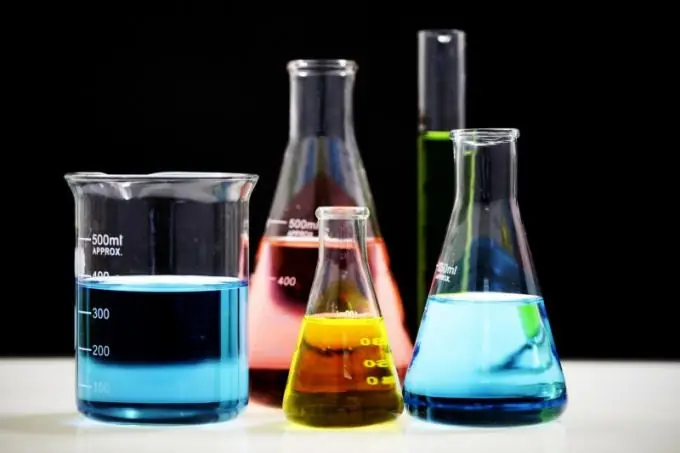- Author Nora Macey [email protected].
- Public 2023-12-16 10:17.
- Last modified 2025-01-23 08:48.
Depending on the context in which the term "precursor" is used, it can mean various groups of substances, including those prohibited for free sale in most countries of the world.

Precursors in chemistry and biochemistry
Chemists often mention precursors in their scientific works. In the context of chemical experiments, precursors today are considered any chemical reagent substances that participate in a chemical reaction aimed at creating toxic chemicals. Especially often the group of precursors includes those reagents that affect the ability of the final substance to exhibit toxic properties.
Precursors are also found in biochemical processes. Only, unlike chemists, specialists in the field of biochemistry call the intermediate members of the metabolic pathway precursors. In other words, any substance that participates in the reaction is a biochemical precursor, and it does not matter whether the formation of certain properties in the final compound depends on the substance.
Precursors in the Criminal Code of the Russian Federation
The term "precursor" is also found in the Criminal Code of the Russian Federation. In the Criminal Code of the Russian Federation, precursors are called substances that are used for the production of drugs and psychotropic substances.
It is important to note that not all substances, one way or another used in the production of drugs and psychotropic drugs, are included in the list of precursors. A special commission is responsible for the formation of the list, and new units of chemical compounds are added to it every year.
Initially, the list of precursor substances banned for open unhindered sale and distribution was created back in 1988 by the United Nations Convention against Illicit Traffic in Narcotic Drugs and Psychotropic Substances.
On the territory of the Russian Federation, the most common precursors are: lysergic acid, methanol, chloroform, toluene, hydrochloric acid, as well as red and yellow phosphorus. All these substances are practically impossible to find on the free market.
By the way, most of the precursors are used in the chemical industry and are nothing more than strong poisons. However, this is not surprising, because narcotic substances are also poisons, but at a certain dosage they do not lead to instant death. An example of a precursor poison is acetic anhydrite, which was previously included in the list of poisons prohibited in the Russian Federation. Now acetic anhydride is used to enhance the effect of narcotic drugs on the brain of the addict.

